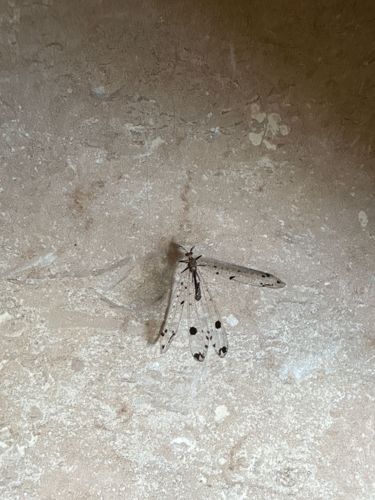Antlion (adult)
Scientific Name: Myrmeleontidae (various genera and species)
Order & Family: Order Neuroptera, Family Myrmeleontidae
Size: Adults typically have a wingspan ranging from 2 to 15 cm (0.8 to 6 inches), with a body length of 2 to 8 cm (0.8 to 3.1 inches).

Natural Habitat
Antlion adults are typically found in dry, sandy areas, often near where their larvae construct pits. This includes woodlands, grasslands, and even arid regions with loose soil.
Diet & Feeding
Adult antlions feed on small insects, pollen, and nectar. Their larvae are predatory, primarily feeding on ants and other small crawling insects caught in their pits.
Behavior Patterns
Adult antlions are typically nocturnal or crepuscular, often resting during the day. They are relatively weak fliers. Antlion larvae are well-known for digging conical pits in sandy soil to trap prey. They lie at the bottom of the pit, hidden, waiting for insects to fall in.
Risks & Benefits
Antlions pose no direct risk to humans; they do not bite or sting. As predators, particularly in their larval stage, they provide a benefit by controlling populations of small insects, including ants, which can be considered pests in some contexts.
Identified on: 8/18/2025